14.6" snowfall last winter as of January 3, 2016.
32 F. high yesterday in the Twin Cities (4:42 AM)
24 F. average high on January 3.
29 F. maximum temperature on January 3, 2016.
January 4, 1981: Air cold enough to freeze a mercury thermometer pours into Minnesota. Tower hits 45 below zero.
January 4, 1971: A snowstorm moves through the Upper Midwest. Winona gets over 14 inches.

Cold Weather Survival Tips - Big Thaw Brewing Latter Half of January
This morning, with a wind chill of -20F, I really don't want to bury the lead. Or is it "lede"? 20s return next week. Long range models bring milder, Pacific air back into Minnesota the latter half of January, with highs in the 30s. This too shall pass, after only 5 days of minor pain. No overwhelming record chill, more of an annoying arctic sting.
If we lived in Atlanta or Dallas this would be a big deal, but Minnesota?
If you're dressed properly and physically active it's not that bad. Slap on a few extra layers, keep your feet dry. If your feet (and ears) are warm & dry you'll be happier. Caulking and weatherstripping your windows, opening blinds on the sunny side of the house, drinking more tea and exercise can make the numbing days of January easier to tolerate. More details below.
Expect single-digit highs and lows from -5 to -10F into Saturday; probably the longest, coldest stretch of the winter with a wind chill of -20F at the bus stop. No exposed skin; inspect your kids (and spouse) before sending them out the door.
Snow? A few inches may fall next Tuesday. It's too cold to snow (much) in the very near future.
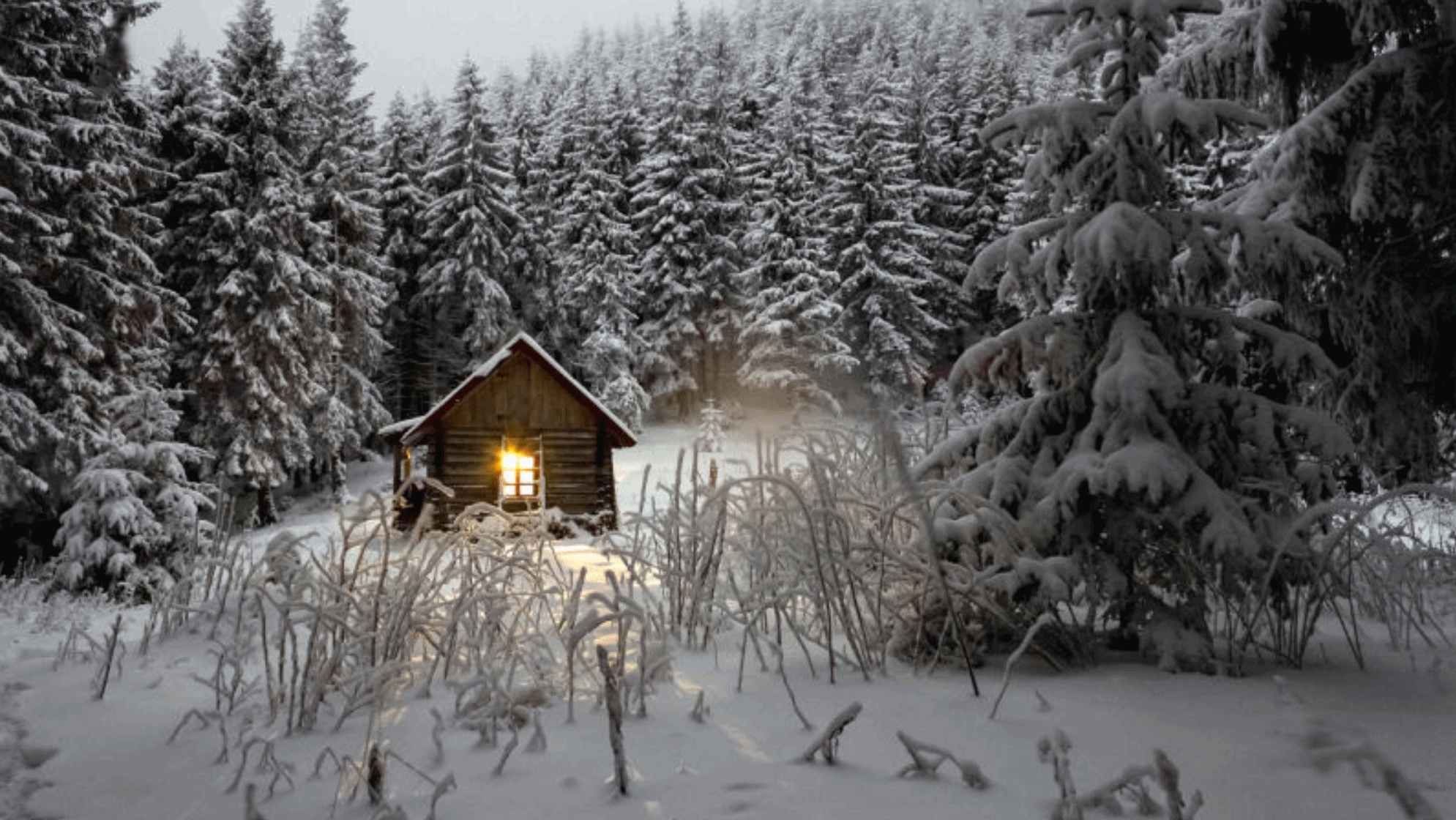
11 Frugal Ways to Deal With Frigid Winter Temperatures. You can do more than dress in layers. Lifehacker has a few very good tips; things I hadn't thought of in the past. Here's an excerpt: "...Direct sunlight tends to warm up a room, so we open the curtains on windows with direct sunlight shining upon them to let warmth into those rooms and leave the curtains and blinds closed on other windows. In the northern hemisphere in the winter, where we live, that means opening the curtains on the east and south side of the house in the morning, and on the west and south side of the house in the afternoon and evening, with all curtains drawn in the middle of the day (as the sun is close enough to overhead to provide no major benefits)..."
Photo credit: Paul Itkin via Unsplash.

Nanook, Not Epic. By Miami, New Orleans or Los Angeles standards what we're about to endure in the Upper Midwest would be nothing less than The End Of The World. The National Guard would be called out - large scale evacuations put into place. Curfews, maybe even martial law. But from the Dakotas to Minnesota and Wisconsin this is just another week in midwinter; the price of doing business. Hour-by-hour 2-meter temperature forecasts show the progression of the numbing air as it pushes south and east. I'll be happy to see the purples go away and the blues come back! Source: Tropicaltidbits.com.

Snow Event for Southeast? It's still not a done deal, far from a slam-dunk, but NOAA's GFS model has been fairly consistent, showing a sharp cold frontal passage, followed by a streak of accumulating, possibly plowable snow this upcoming weekend. Enough snow to gum things up in Birmingham, Atlanta, Columbia and the eastern Carolinas? It doesn't take much.
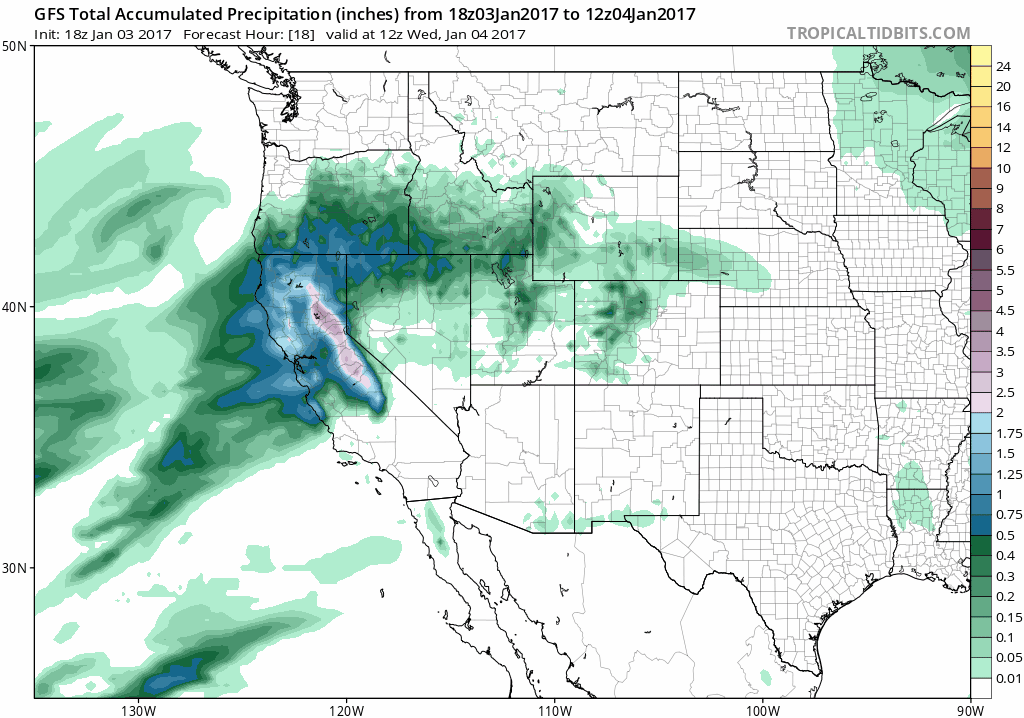
Atmospheric River = Extreme Precipitation for California. We could be looking at a major flood for much of central and northern California, as a conga-line of Pacific storms push inland between today and late next week, each one dumping an inch or so of liquid, and a few feet over the mountains. By late next week some 5-10" rainfall amounts are possible over central and northern California, especially the coastal range. 10-20" liquid for the Sierra Nevada translates into over 10 FEET of snow over the next 9 days, with avalanches widespread. California goes from epic drought to biblical floods and snows, in a meteorological blink of an eye. Total precipitation: NOAA GFS and Tropicaltidbits.com.
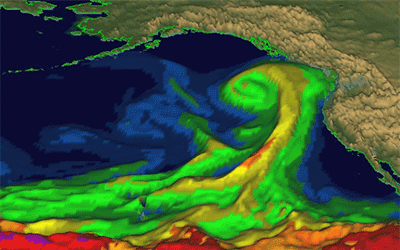
Loop credit: an atmospheric river event in February, 2015.
Why Do People Get Colds in Cold Weather? Here's an excerpt of a good explanation at Forbes: "...You’re
outside on an unexpectedly chilly day. You forgot to wear your hat and
gloves and now you’re shivering. Is it a given that you’re going to
catch a cold or come down with the flu? Maybe. Cold weather doesn’t make
you sick, germs do, but research suggests that cold weather can create
conditions that help those germs survive and thrive.
Here, we investigate 5 reasons why you’re more likely to get sick in the colder winter months:
1. You’re indoors more. Being stuck indoors increases your risk of getting sick in a few different ways. Researchers in China and at Virginia Tech
have found students may get sick more frequently when their dorms are
poorly ventilated and lacking humidity. Why? Researchers suspect that
the germs in the droplets from a sneeze are able to survive better in
dry air. It follows that this logic could apply to your cramped office
cubicle, too..."
Map credit: "So the purple presumably denotes a once in a millennium event?" (photo: DMI.dk)
4 Dead as Tornado Hits Alabama Community. Here's an excerpt from CNN.com: "Four people were killed when a tree fell on a home as a tornado swept through a rural Alabama community on Monday evening, authorities said. The four were in a residence in the unincorporated community of Rehobeth when the storm struck. Crews were still working late Monday to remove the bodies from the structure, said Kris Ware, spokesman for the Houston County Emergency Management Agency. The National Weather Service reported that a tornado was in the area at the time of the incident. Its size and strength will be determined when survey crews have examined the extent of the damage..."

Photo credit: "Flying high into 2017." (Solar Impulse)
No Matter the President, Solar Outlook Increasingly Bright. Here's a clip from TheHill: "...In fact, very little additional federal support is absolutely needed to keep solar growing in 2017 and beyond. The driving force behind solar’s ability to stand on its own is innovation — both on cost and business models. Solar costs have fallen more than 80 percent since 2009, placing its levelized cost of electricity below coal, nuclear, and most natural gas technologies. This trend is accelerating — solar costs have decreased up to 17 percent in 2016 compared to 2015. Falling costs make solar an economic choice, not an environmental one. The U.S. solar market just experienced its largest quarter ever, adding nearly two megawatts (MW) of new capacity per hour, and U.S. Energy Information Administration data predicts solar will make up 37 percent of new large-scale generation nationwide in 2016..." (File photo: Bloomberg).
Electric Car Sales Pass Half a Million in U.S. Newsweek has the details: "More than 500,000 electric cars have been sold in the United States, according to a report from an electric vehicle charger operator. The sale of more than 130,000 plug-in hybrid or battery-powered electric vehicles between November 2015 and November 2016 pushed the total number of electric cars sold in the U.S. to 542,000. The milestone was highlighted in a report by Chargepoint, first seen by the technology news website Recode, which also ranked the U.S. with the highest electric vehicle adoption. California, home of Silicon Valley and Tesla, has the highest number of electric vehicles in operation, ahead of Georgia, Washington, Florida and Texas..."
File photo: Shutterstock.
Photo credit: "The Magic Kingdom." Anthony Quintano/CC BY 2.0
Photo credit: Hawaii Chamber of Commerce.
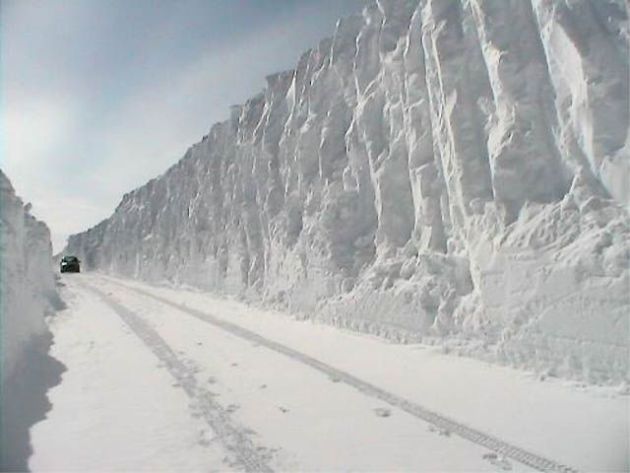
TODAY: Chilly with intervals of ineffective sunshine. Feels like -20F. Winds: NW 10-15. High: 3
WEDNESDAY NIGHT: Mostly clear and cold. Low: -7
THURSDAY: Some sun. Subzero "highs" for most of Minnesota. Winds: NW 8-13. High: 2
FRIDAY: Clouds increase, still nippy. Winds: W 7-12. Wake-up: -9. High: 7
SATURDAY: Reinforcing shot. Still feels like -20F. Winds: NW 8-13. Wake-up: -7. High: 4
SUNDAY: Numbing start, then winds increase. Winds: S 10-20. Wake-up: -10. High: 17
MONDAY: Mostly cloudy, not as harsh. Winds: NW 5-10. Wake-up: 11. High: 26
TUESDAY: Chance of wet snow or a mix. Winds: SE 10-20. Wake-up: 21. High: 33
Climate Stories...
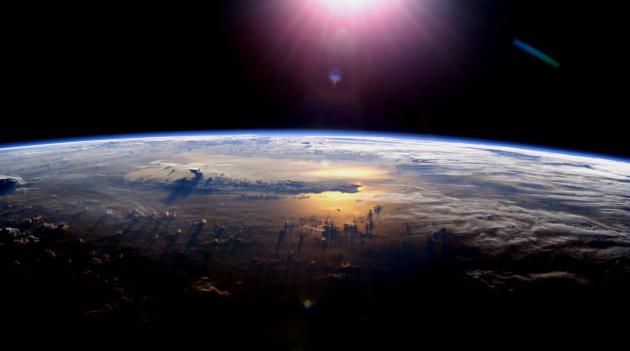
The dumbing down of America is most evidence in the slow decay of substantive content in the enormously influential media, the 30-second sound bites (now down to 10 seconds or less), lowest common denominator programming, credulous presentations on pseudoscience and superstition, but especially a kind of celebration of ignorance..."
Carl Sagan, "The Demon-Haunted World: Science as a Candle In The Dark"
The Biggest Clean Energy Advances in 2016. MIT Technology Review has the story; here's an excerpt: "Clean energy made critical strides in 2016. The Paris Climate accords went into effect, the price of solar installations continued to drop, investments in renewable energy soared, offshore wind finally got under way in the United States, and scientists made a series of technical advances that promise to make sustainable energy increasingly efficient and affordable. That last one is key, since invention is still the surest way to avoid the greatest impacts of climate change. Today's commercially available renewable technologies can't meet all of the world's energy demands, even if they're scaled up aggressively. The United States comes up about 20 percent short by 2050, according to a thorough analysis by the National Renewable Energy Laboratory. Meanwhile, the U.N.'s Intergovernmental Panel on Climate Change concluded the world must cut greenhouse gas emissions by as much as 70 percent by midcentury, and to nearly zero by 2100, to have any chance of avoiding warming levels that could ensure sinking cities, mass extinctions, and widespread droughts..."
The Free-Market Case for Climate Science. Here's an excerpt of an Op-Ed at Bloomberg: "...There’s reason to think the evidence for human-caused climate change is prevailing in the economic marketplace, as well: Property insurers and other profit-maximizing businesses with a substantial financial stake in the concept are taking actions that demonstrate they believe the evidence. They are working to create more accurate models of climate change and to price climate risk into insurance programs, even threatening lawsuits against actors who do not try to limit ongoing climate change. As we say in economics, revealed preferences are more convincing than stated ones. Fundamentally, the concept of human-caused climate change has won out because alternative views -- including arguments that the theory is a hoax spread by anti-growth and anti-technology Jeremiahs -- contradict what competitive markets are demonstrating. In the end, then, it is inconsistent to simultaneously accept that markets are powerful ways to allocate goods and services in the economy and also deny that human activity is causing substantial climate change..."
File image: NASA Earth Observatory.
Best Environmental Stories from 2016. Here's an excerpt from Pacific Standard: "I
think we can all agree, things really went off the rails in 2016.
Environmentally, it was a year of extremes. It is more likely than not
to be the hottest year on record, and yet, global fossil fuel emissions flattened. Wildfires torched tens of thousands of acres across the United States in one of the longest and largest fire seasons on record, and the Paris Agreement entered into force. Storms that should only happen every 500 years became increasingly common, and the Army Corps of Engineers denied permits for the Dakota Access pipeline pending a thorough environmental impact study. A noxious bacterium re-emerged from thawing permafrost, and, oh yeah, Americans elected a climate denier
into their country’s highest office. It is becoming increasingly clear
that this planet is rapidly approaching a tipping point. “If we lose
this moment for action, there’s no speech decades from now that will put
these massive ice sheets back together,” Secretary of State John Kerry said
at COP22 this year in Marrakech. “There’s no magic wand in any capital
in the world that you can wave to refill all of the lakes and rivers
that will dry up, or make farm — arid farm land fertile again. And we
certainly won’t have the power to hold back rising tides as they
encroach on our shores. So we have to get this right, and we have to get
it right now...”
Photo credit: "A
chinstrap penguin surveys his domain near the shore of the Antarctic
Peninsula. Some penguin species have already been displaced by the
decline of ice in the region, and many populations will lose habitat in
the decades ahead." (Photo: Bob Berwyn).
A Witness to Iran's Intensifying Struggle with Climate Change. Here's a clip from a story at The New Yorker: "...But
efforts to build a clean-energe infrastructure are not yet widespread.
Last October, researchers at M.I.T. published a study titled "Future
Temperature in Southwest Asia Projected to Exceed a Threshold for Human
Adaptability." They found that, by 2070, if worldwide emissions aren't
sufficiently reduced, the Persian Gulf would experience heat waves
impossible for many humans to survive. The oil-producing city of
Bandar-e Mahshahr, on Iran's southwest coast, got a preview of that
boiling future two summers ago. One day in July, temperature and
humidity conspired to make the air feel like a hundred an sixty three
degrees Fahrenheit."
Top 10 Tropical Cyclone Events of 2016 Potentially Influenced by Climate Change. Jeff Masters reports for "Category 6" at WunderBlog: "Tropical cyclones—which include all hurricanes, typhoons, tropical storms and tropical depressions—are expected to change in intensity, frequency, location, and seasonality as a result of climate change. Many of the tropical cyclones of 2016 exhibited the type of behavior we expect to see more of due to global warming. Here, then, is a “top ten” list of 2016 tropical cyclone events of the type we should expect to see more of due to global warming. Tropical cyclones are heat engines which extract heat energy from the oceans and convert it to the kinetic energy of the storms' winds. Thus, the strongest tropical cyclones are expected to get stronger in a world with warmer oceans. It was not a surprise that in 2016—a year with the warmest ocean temperatures on record, globally—we saw the strongest storms ever observed in the two of the six ocean basins that tropical cyclones commonly occur in. If we include the Northern Hemisphere’s strongest tropical cyclone on record—Hurricane Patrica of October 2015—records have been set in three of the six ocean basins over the past two years..."
Image credit: "A visible image of Tropical Cyclone Fantala collected at 1025Z (6:25 am EDT) on April 18, 2016, by the Moderate Resolution Imaging Spectroradiometer (MODIS) sensor on board the Aqua satellite. The north tip of Madagascar can be seen at bottom. At the time, Fantala was the strongest tropical cyclone ever observed in the Indian Ocean, with winds estimated at 175 mph." Image credit: NASA.
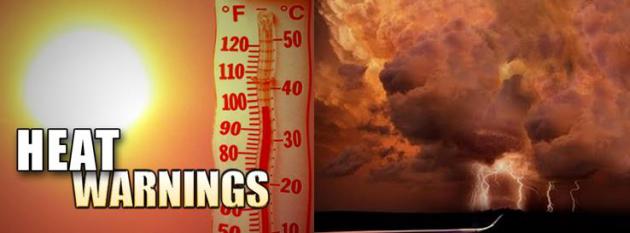
Photo credit: "A firefighter watches as smoke from a wildfire swirls around a stand of trees near Morgan Hill, Calif., on Tuesday, Sept. 27, 2016. A heat wave stifling drought-stricken California worsened the state’s wildfires in 2016." Photograph: Noah Berger/AP.
No comments:
Post a Comment